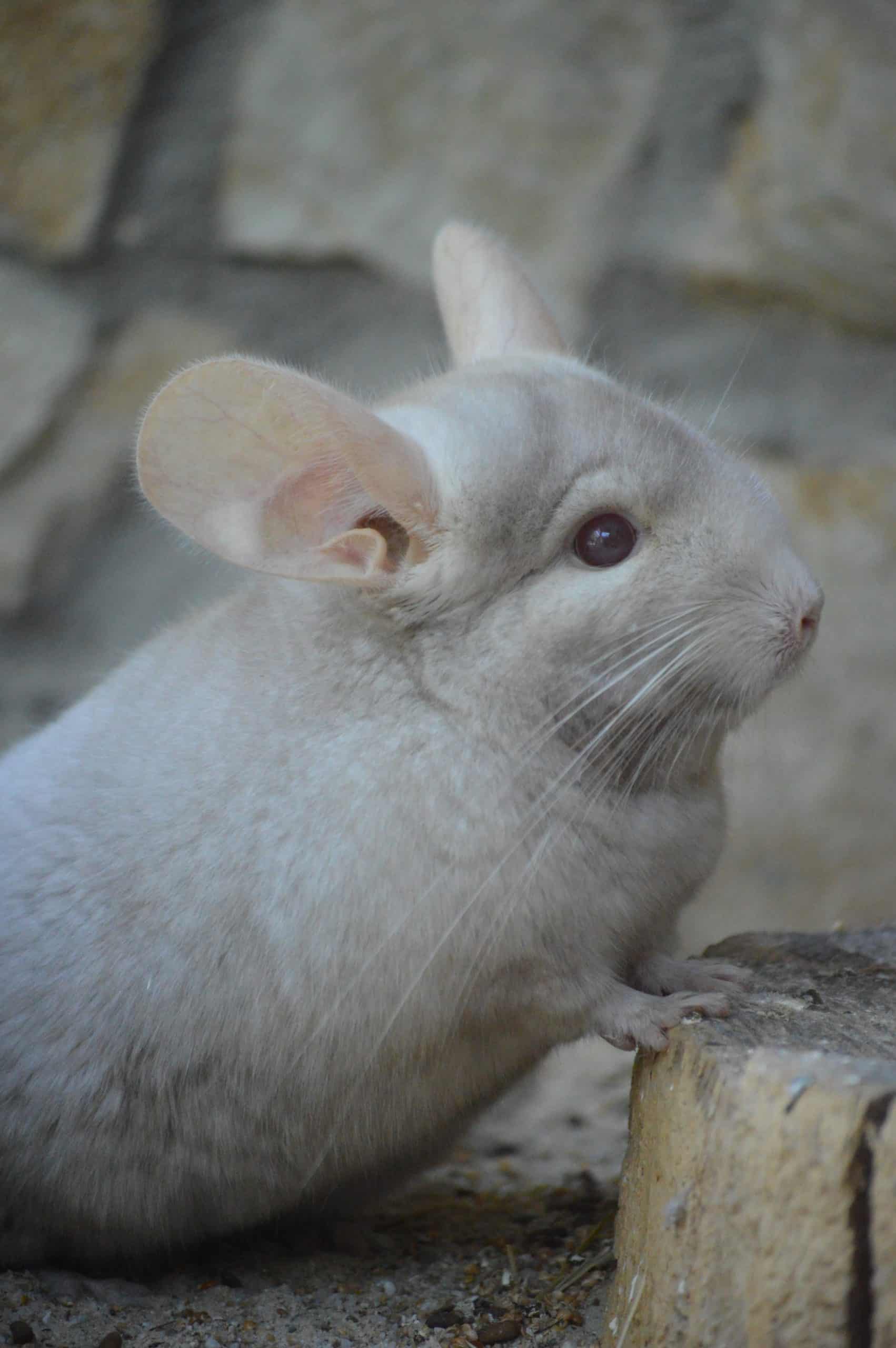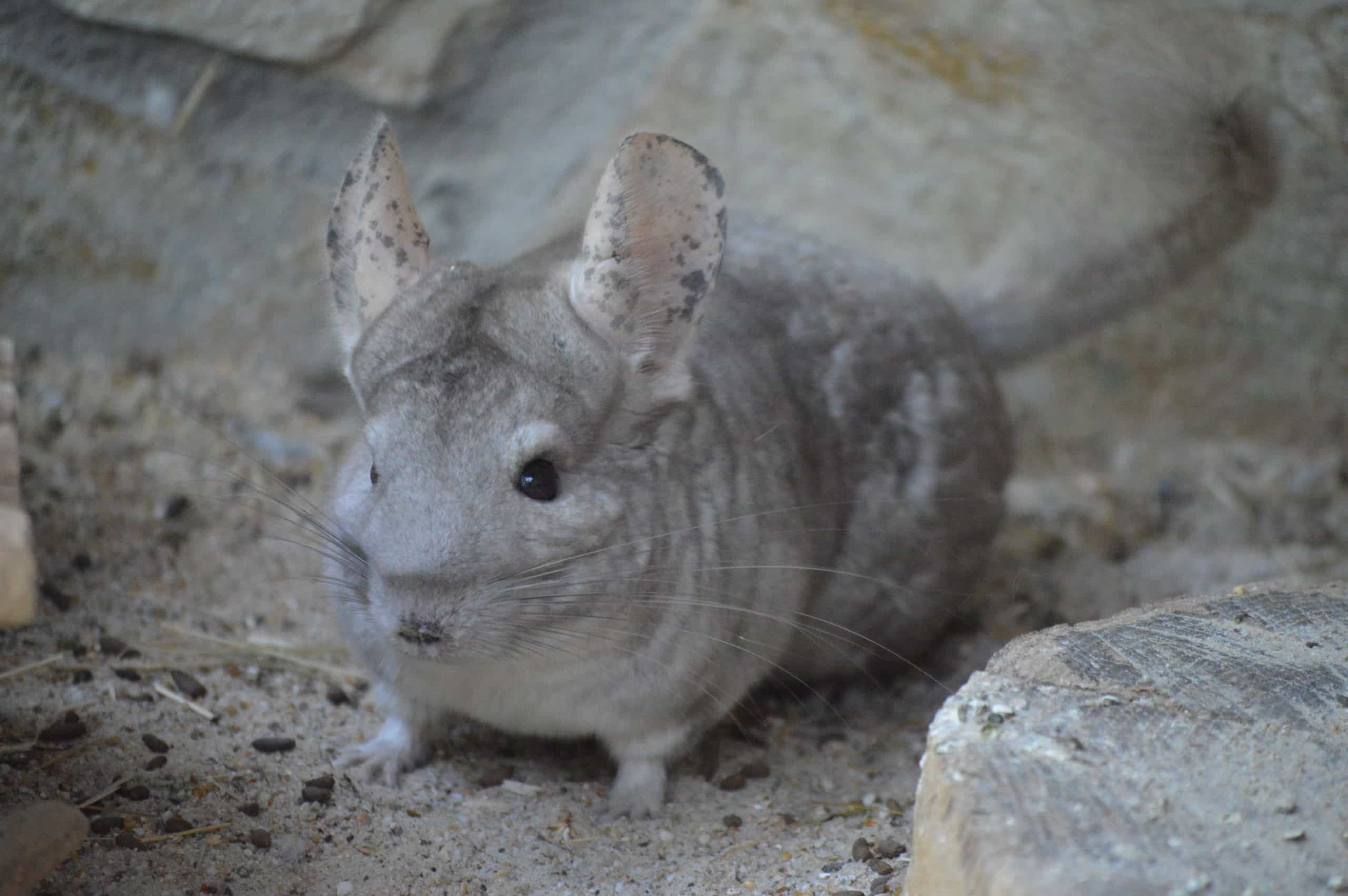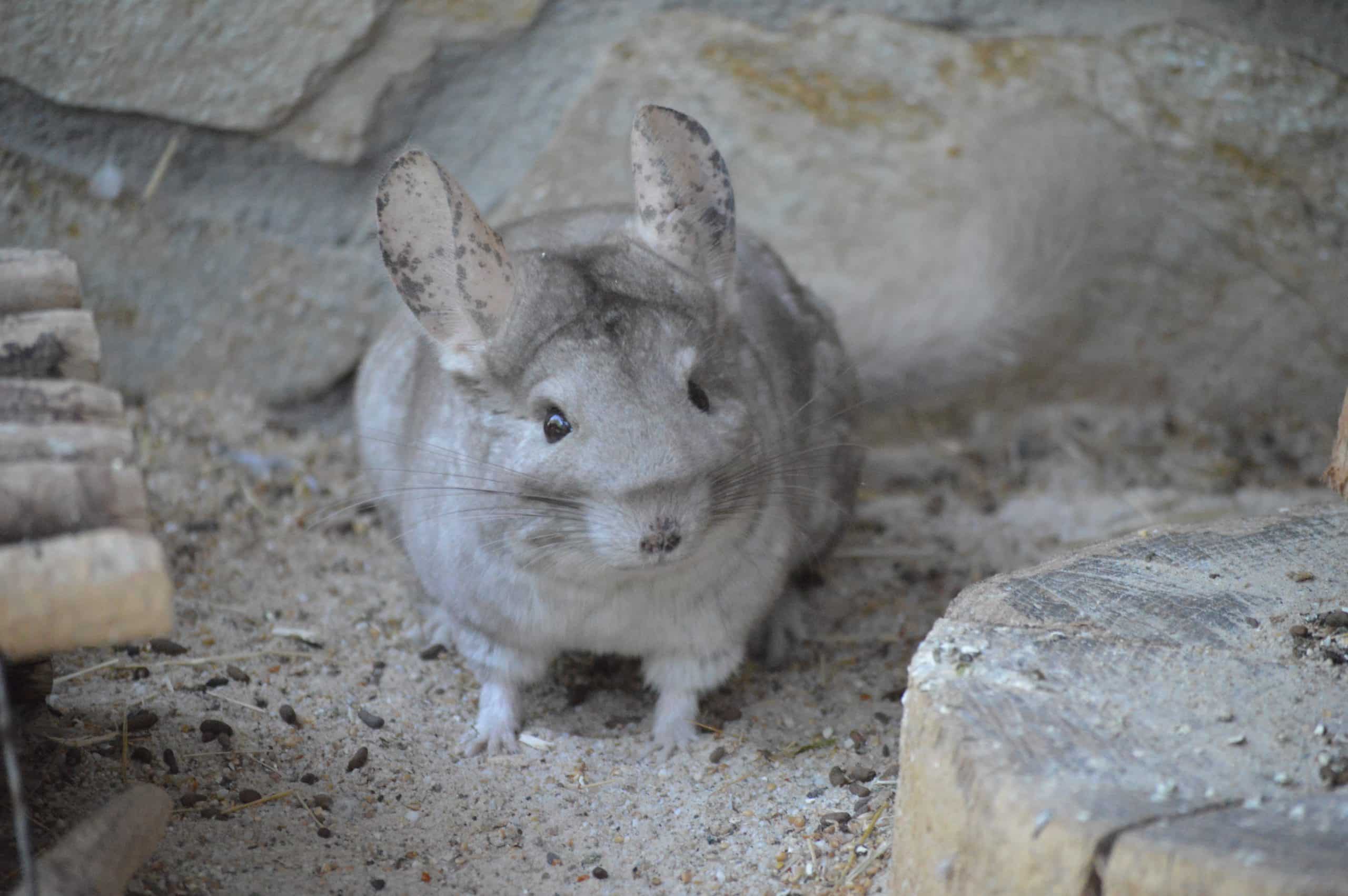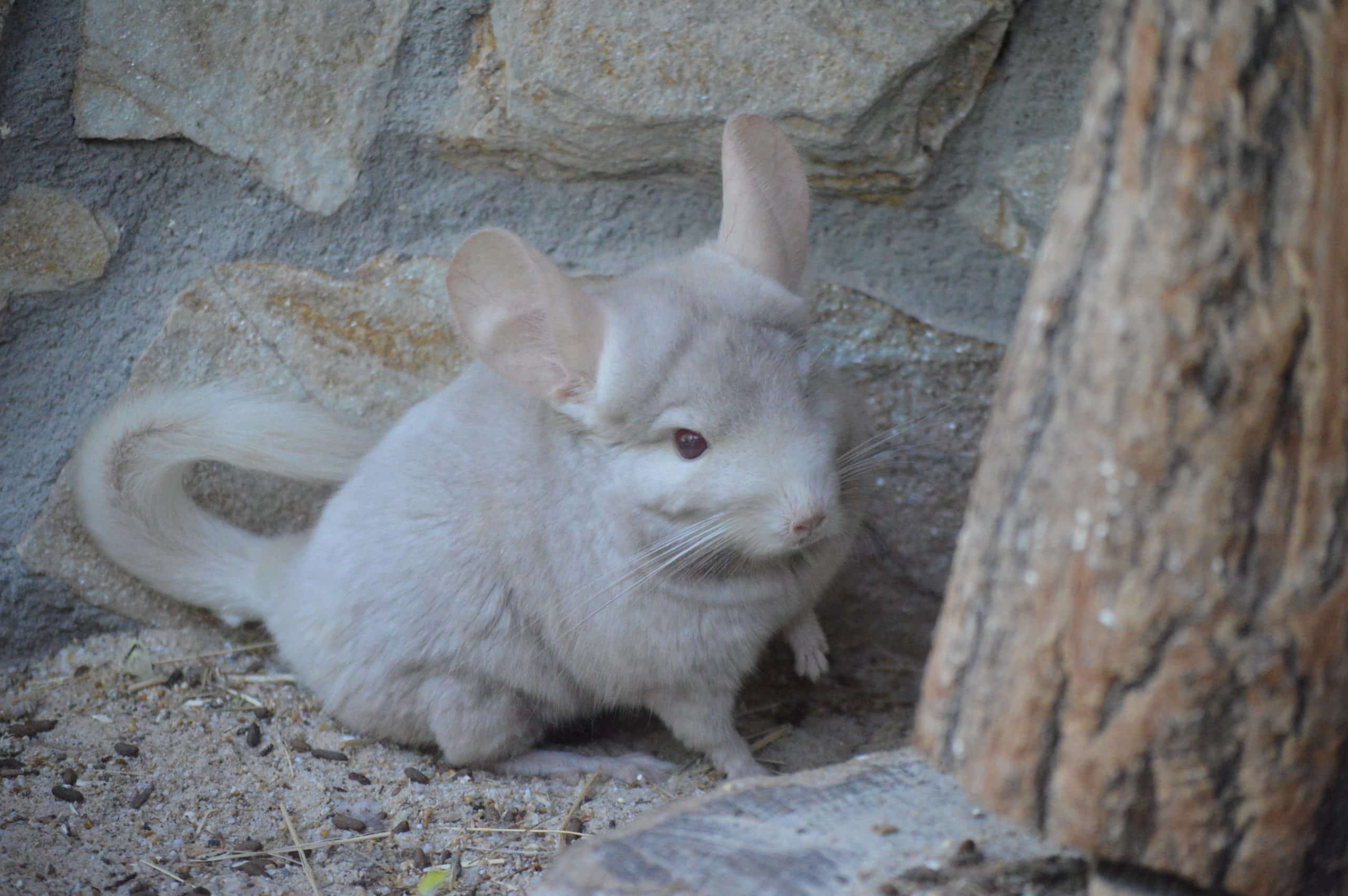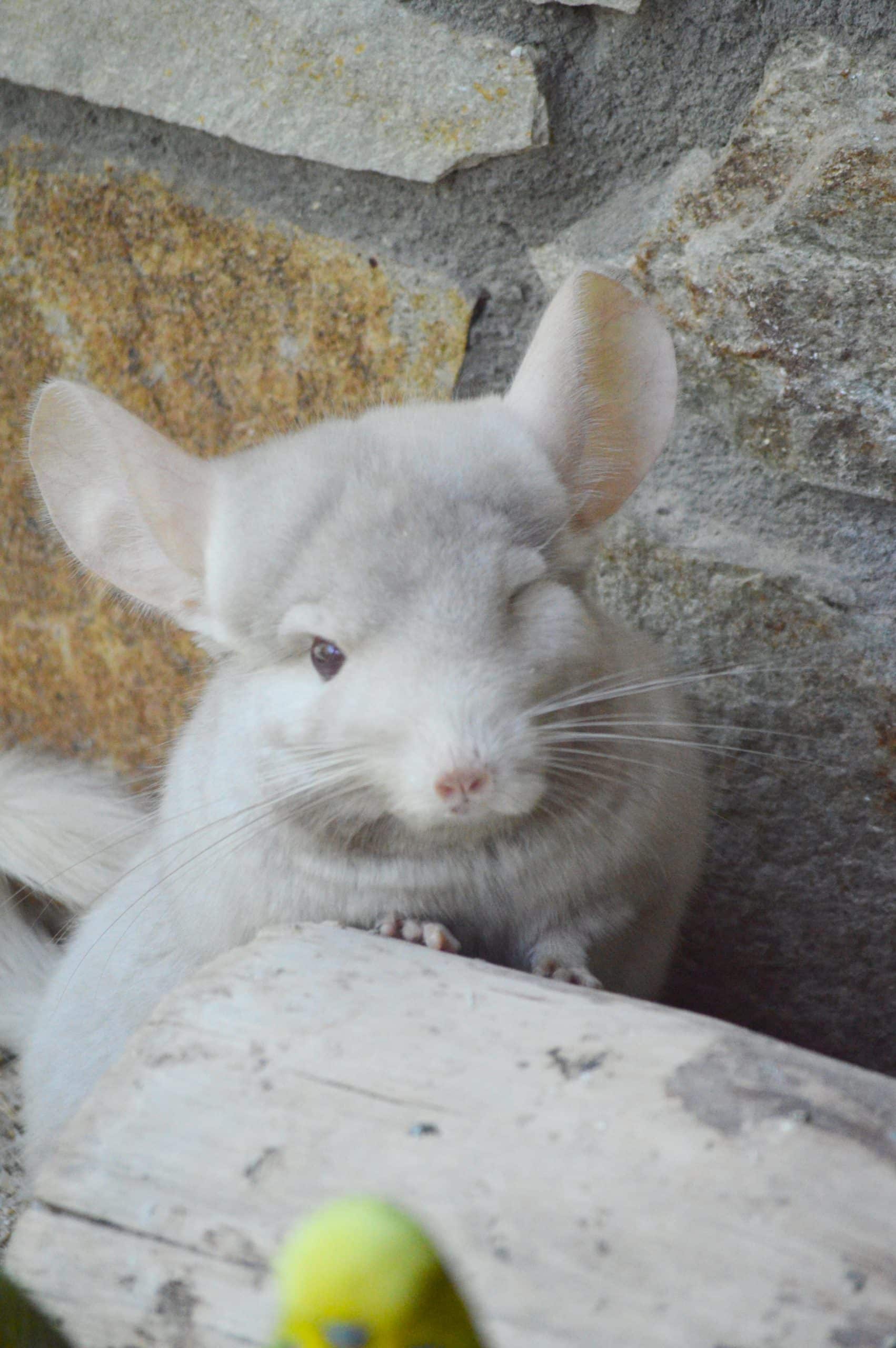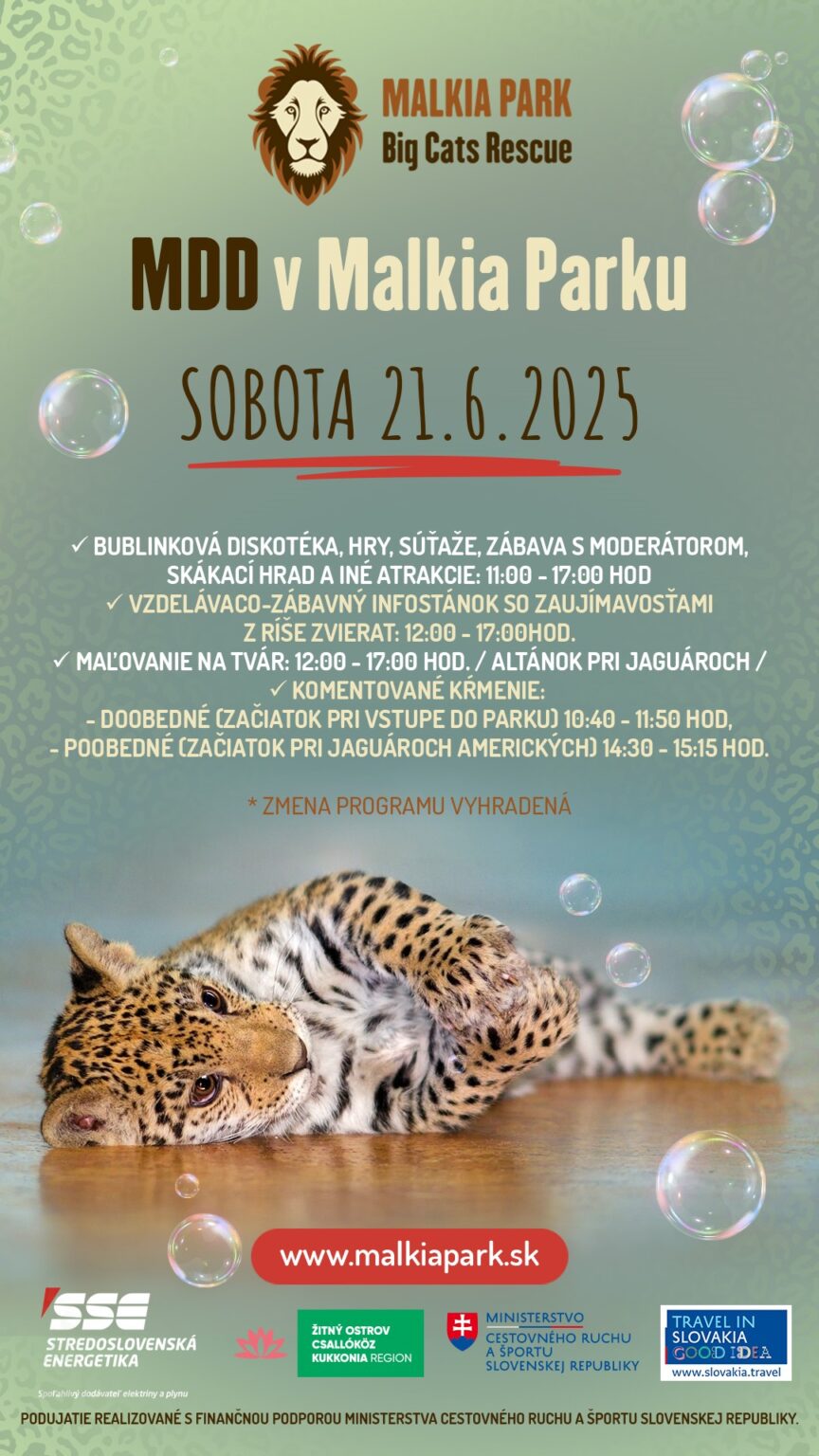The coat is very dense and soft to the touch. It protects the chinchilla from the cold. Each hair follicle grows 40 to 80 individual hairs, which means that there are more hairs per square centimetre of its skin than in any other mammal. The upper side of the body is pearl or silver-grey and finely marbled. The underside of the body is lighter. The head is quite large with a broad muzzle and large black eyes. The long thick tactile whiskers may be black or white. The ears are round and stand away from the head. The hind legs are long and muscular. They have soft pads on the tips of the toes to protect the foot from sharp stones. The tail is long and fluffy. The hairs on it are thicker than on other parts of the body and have a brown or black pattern.
It lives in colonies in rock crevices, various holes, or small burrows. Usually, a group of two to five individuals live in a single burrow. It is mostly active at night. In the morning, it usually basks.
It becomes sexually mature at around four months and usually finds a mate by then – usually for life. The female is very aggressive during the breeding season. A female can have three litters in one year, but in the wild it is usually only one. One young weighs about 45 grams at birth and measures about 5 cm. The young are born furred, with teeth, and they can see. After two days, they also eat solid food. The parents take care for the young until they are six to eight weeks old, after which they wean them completely.
Because of its soft and warm coat, the chinchilla was almost exterminated in its homeland. Today, however, it is also kept as a pet by people all over the world.
To make one long coat, fur from 150 chinchillas is needed.
Hunters in the 18th century hunted chinchillas in large numbers. Around 500,000 hides were exported annually from Chille alone in the late 19th century. In the 1920s, the export of furs and the hunting of chinchillas was prohibited by law. Around the same time, however, it was discovered that chinchillas could easily be bred artificially on farms. This is also perhaps one of the reasons that saved them from complete extinction in the wild.
